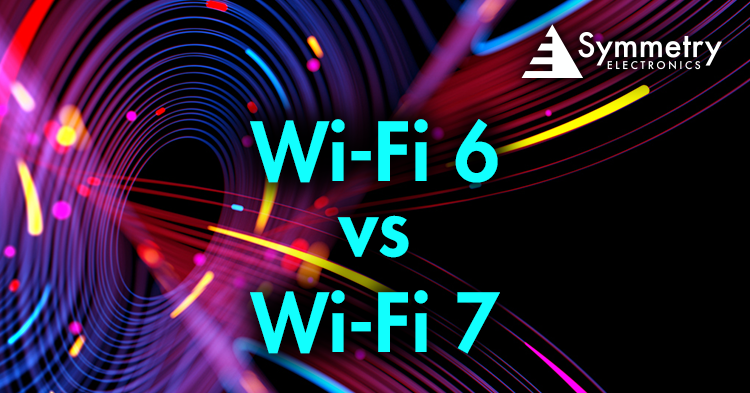The Evolution of Wi-Fi: What You Need to Know About Wi-Fi 6 and Wi-Fi 7
Educational | 14-05-2024 | By Jack Pollard
As the wireless technology landscape continues to evolve, staying updated with the latest standards like Wi-Fi 6 and Wi-Fi 7 is essential. This article, written by Jari Haiston, Technical Content Marketing Specialist at Symmetry Electronics, explores the capabilities and differences of these two advanced standards, providing insights into how they can enhance network efficiency and performance. With Wi-Fi 6 already improving connection stability and speed, and Wi-Fi 7 set to introduce even faster data rates and lower latency, understanding these technologies will help in making informed decisions for future network upgrades and deployments.

Introduction
As of 2021, slightly over half of all Wi-Fi product device shipments were equipped with Wi-Fi 6 capabilities. Despite this, discussions about the next generation of wireless technology are not premature. Projections from the Wi-Fi Alliance® suggest that Wi-Fi 6 shipments will exceed 5.2 billion by 2025. Surprisingly, Wi-Fi 7 was officially unveiled on January 8, 2024 with Wi-Fi CERTIFIED 7™, prompting questions about the rationale behind this overlap. Is there space for two concurrent Wi-Fi standards? What sets them apart, and how do they contribute to ongoing advancements in technology?
Understanding Wi-Fi 6
The announcement of Wi-Fi 6, also known as 802.11ax, marked the first major update to Wi-Fi technology in five years. It introduces several key features aimed at improving speed, efficiency, and overall performance.
One notable advancement is the utilisation of both the 2.4 GHz and 5 GHz bands simultaneously, allowing for more efficient data transmission and reduced congestion. Additionally, Wi-Fi 6 boasts a significant increase in maximum speed, with theoretical speeds reaching up to 9.6 Gbps. Moreover, the introduction of Wi-Fi 6E further expands the spectrum by unlocking the 6 GHz band, offering even greater bandwidth and reduced interference for compatible devices.
Where Does Wi-Fi 6E Come In?
Wi-Fi 6E represents a significant leap forward in wireless networking technology. With the Federal Communications Commission (FCC) paving the way for the use of the 6 GHz band, Wi-Fi 6E promises enhanced performance and reliability.
By leveraging the additional spectrum, Wi-Fi 6E can deliver lower latency, wider channel availability, and improved connectivity, particularly in dense urban environments. Moreover, the introduction of Wi-Fi 6E has implications for mesh Wi-Fi systems, allowing for seamless coverage and faster speeds across a broader area.
Introducing Wi-Fi 7
Wi-Fi 7, also known as 802.11be, builds upon the foundation laid by Wi-Fi 6 and introduces several ground-breaking features. One of the most notable advancements is its utilisation of not only the 2.4 GHz and 5 GHz bands but also the newly unlocked 6 GHz band. This tri-band approach enables Wi-Fi 7 to achieve Extremely High Throughput (EHT), offering data rates more than four times faster than Wi-Fi 6.
With such remarkable speeds, Wi-Fi 7 holds the promise of revolutionising the way we connect and communicate, paving the way for future networking capabilities and applications.
To continue reading, please click HERE.

